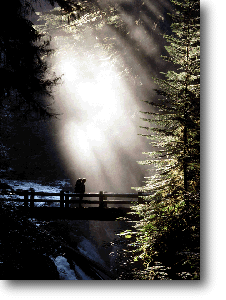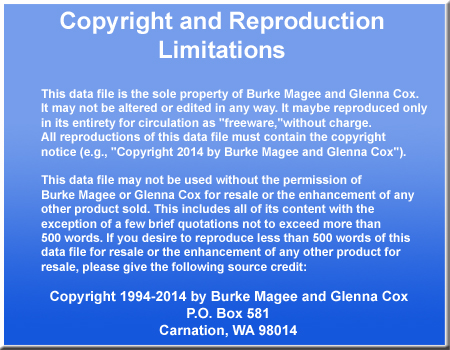A Day of
Rest -What a Wonderful Gift!
God gave us the Sabbath (Hebrew: Shabbat) as
a day of rest and rejuvenation, a day to enjoy His creation and focus on Him. Shabbat
means "to rest". How many times in our busy lives we don't take time for needed
rest! The pace of life today is much faster than it's ever been. Today's families seem to
never have enough time to spend together. Celebrating the Sabbath provides time to unwind,
be with family and refocus on God. The Sabbath begins at sundown on Friday evening and
lasts until sundown on Saturday evening. The Friday evening meal (Erev Shabbat or
"Sabbath Eve") is very special and celebrates entering into Sabbath rest.
Saturday evening it is customary to celebrate the close of the Sabbath with the Havdalah
service.
Unfortunately, the celebration of the Sabbath is a
tradition that has been lost to many Christians. The celebration is an excellent teaching
tool about God and His plans for humanity, and a wonderful "family time" as
well. This article will provide basic information to help you to celebrate the Sabbath.
History of the Sabbath
The Sabbath was the first festival to be outlined by
God to Moses in the book of Leviticus. It was the first festival observed by God Himself
in the book of Genesis, as well as being the first to be observed by man, even before the
revelation at Mount Sinai when the other festivals were commanded. The Sabbath is a time
of rest and is a Picture of the Bride (God's people) resting with the Bridegroom, Yeshua
(Jesus). It is very symbolic of the ultimate fulfillment of the Sabbath -- the 1000 year
rest (the Millennium).
In ancient Jewish eschatology, it was believed that
time was a seven thousand year period, starting with the creation of the Heavens and the
Earth in Genesis 1 and ending with the Messianic Kingdom in years 6000 - 7000 (Revelation
21). Time was divided into three stages of 2000 years: Years 1-2000 (after the fall)
called Tohu or desolation, years 2000-4000 called Torah, or instruction (after the giving
of the law), and years 4000-6000 called Y'mot Mashiach, or days of the Messiah (starting
with the Messiah's birth in the 4000th year). We are currently in this time period. In the
6000th year the Messianic Kingdom is thought to begin until year 7000, when the Olam Haba
or eternity will begin. Ancient Rabbis saw the 7 days of a week as a pattern of the seven
thousand year plan of God. They believed that the Sabbath was a picture of the Messianic
Kingdom, which we refer to as the Millennium. |
Sabbath
Eve Celebration
(Erev Shabbat)
The Sabbath begins at sundown on Friday evening
(Erev Shabbat or "Sabbath Eve"). The Friday evening meal is very special and
celebrates entering into Sabbath rest. At this time, the focus should turn from the
activities of the week and should center on God, our family, rest and rejuvenation.
What You Will Need to Celebrate!
1. A pair of candle holders with two
white candles and matches
2. Wine or grape juice with glasses
3. A pitcher of water, a bowl and a
towel
4. Two loaves of bread (challah is
traditional)
5. A salt shaker
6. A nice napkin to cover the bread
7. A special dinner
How to Celebrate
Traditionally, the man and woman lead
their family in celebration of the Sabbath, however anyone can perform the service. The
steps are numbered in the order that they should be performed. The speaking parts are
denoted by blue text. Explanations for each step are included in italics.
For people not familiar with celebrating the Sabbath, it is useful and edifying to read
the explanations aloud as the celebration is being performed.
Woman
1. Preparation Prayer
The preparation prayer is spoken by the woman
before lighting the Sabbath candles. Traditionally, the woman covers her head with a scarf
while lighting the candles. A small pair of candles may also be lit by a daughter, as she
learns from her mother.
Heavenly Father, we thank you for
the blessings of your rest and peace this evening. Holy Spirit, be with us as we partake
of this Shabbat. Fill our hearts and minds with your shalom, your peace that surpasses all
understanding. Guide each of us that we may bless one another with our words and actions.
We ask your blessing over our home and family. Pour out your Spirit upon us as we partake
of your Shabbat, your rest. |
May our
home, our hearts and our minds be used by you to bring the news that your Messiah has
come, has risen and will come again! In the name of Yeshua Ha Mashiach we pray. Amen. 2. Lighting the Candles
As the woman lights the candles remember that God
chose another woman, Mary, to bring forth "The Light of the World" (John 8:12).
Baruch atah Adonai Eloheynu melech
ha-olam, asher kid-shanu b'mitz-votav, v'tzinvanu l'hadlik neyr shel Shabbat
Blessed art Thou, O Lord our God,
King of the universe who has set us apart by Your commandments and has enjoined upon us
the kindling of the Sabbath light.
Creation (lighting the first candle) This
candle represents creation. "In the beginning God created the heavens and the
earth...And God said, 'Let there be light' and there was light." -- Genesis 1:1,3.
Redemption (lighting the second candle) This
candle represents redemption. Yeshua said, "I am the Light of the World. Whoever
follows Me will never walk in darkness, but will have the light of life." -- John
8:12.
The woman may now pray silently for her children.
Man
3. Blessings
The man lays his hands upon his wife and each
child as he asks the Lord's blessing upon them. To the wife, he may read Proverbs 31
"A wife of noble character..." He continues with an appropriate blessing, such
as:
Lord, I thank You for Your blessing
of this woman to me. I ask that You bless her. Remove all fear and doubt from her heart
and mind. Grant her Your shalom, Your peace that surpasses all understanding. I ask that
You guide her steps and guard her path from Satan. Let her know that I am committed to
You, and I am committed to her. In the name of Yeshua the Messiah I pray. Amen.
To the children he may read Psalm 127:3
"...children are a reward from Him." He continues with an appropriate blessing
such as:
Lord, I thank you for the blessing
of this child. I ask that You fill him/her with Your Holy Spirit and guard his/her
footsteps. I ask that You guard his/her path from Satan. I ask that You build his/her
character in Your likeness, in truth, honor and light. I ask that You remove fear from
this child and fill him/her with Your Holy Spirit. In the name of Yeshua the Messiah I
pray, Amen. |

